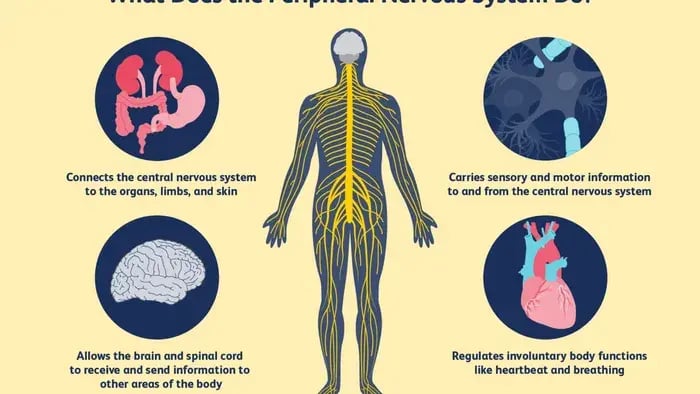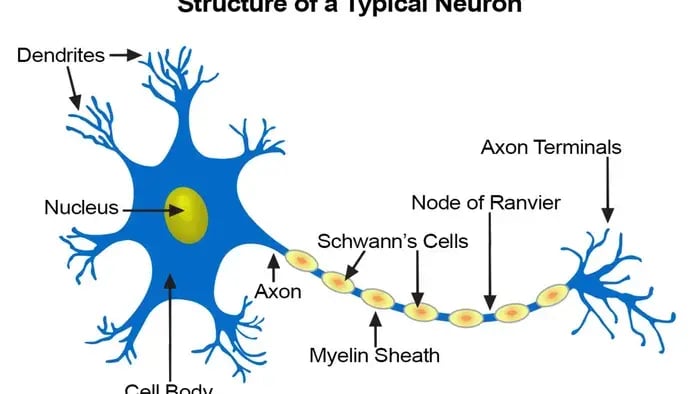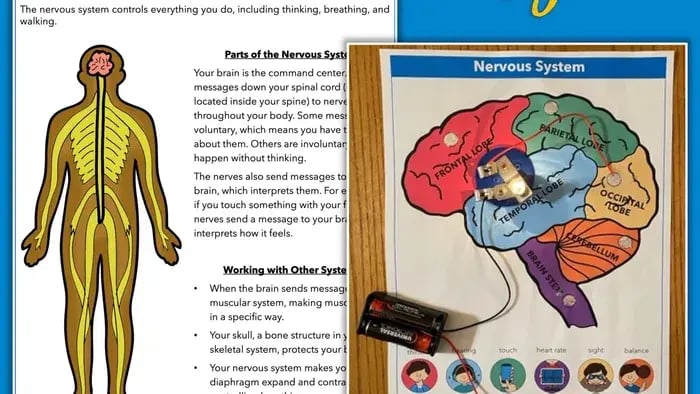Simple Ways to Teach Kids About the Nervous System
- Include Interesting Facts
- Integrate Riddles and Jokes
- Promote Activities
- Make them Play Games
Introduction
Effective study lessons include making a child understand all the concepts thoroughly. A thorough understanding ensures that a child doesn't have to go through the same lesson again and again to retain the information taught. Even the most difficult topics related to science, mathematics, social science, and other subjects can become easy with the right teaching strategy.
One essential science lesson for kids is understanding how the nervous system works. It is not just important from an academic perspective, but may also help the child understand how their body works. Since it's a rather complex topic, kids may need some assistance and extra help from parents or teachers. Hence, here is a breakdown for you on how you may introduce the concept of the nervous system to your child and make them understand it properly.
What is the Nervous System and Why Is It Important

Before dwelling on how to teach the nervous system to kids, it's first important to understand the function of the nervous system and how it is integral to the human body. As per Anatomy, Central Nervous System published in 2022, the nervous system can be divided into the central nervous system and the peripheral nervous system. Each of these has specific functions to perform. While the central nervous system includes the brain and the spinal cord, the peripheral nervous system on the other hand consists of a complex system of nerves that are spread into different parts of the body.
In totality, the work of the nervous system is to send and receive messages to and from different parts of the body. It also helps in better coordination among various body parts that may help a smoother functioning of the heart, the lungs, and cognitive tasks.
How to Make Central Nervous System Easier for Your Child
Because of complex terminologies and lengthy content, learning this concept might be a bit difficult for your child. However, it can be simplified by following these strategies.
Include Interesting Facts

One of the best ways to grab your child's attention and keep them concentrated is by intriguing them with scientific facts. This may help spark inquisitiveness in your child and encourage them to explore even more. Some interesting facts that you may teach your kid about the nervous system can be
- As per the Indian Journal of Pharmacology, the human body has more than billions of nerve cells. It is so fascinating to even imagine.
- As per JCBFM published in 2010, of all the oxygen that a human body gets, more than 20% of it is consumed by the brain to perform various functions.
- As per Neurons: A Curious Collection of Shapes and Sizes published in 2012, it is not necessary that all your neurons look like each other. Many neurons may have a different structure from each other.
Integrate Riddles and Jokes
Parents can keep the nervous system lesson less challenging for their children by making them have fun while learning. This can be done by integrating different types of riddles and jokes related to the concept. This way you can make learning child-friendly while also making them think critically. As per The Riddle as a Learning and Educational Tool published in 2013, riddles can be effective in making a child retain more information and help the child not feel overwhelmed while studying. This would promote a more seamless transfer of education, and the child might stay more engaged than usual. Similarly, jokes can help lighten the environment and make a child smile while learning.
Promote Activities

A great way to promote experiential learning is by making your child do activities that enhance the learning experience and output. While teaching your child the nervous system and its functions, you may encourage them to draw diagrams of various parts of the nervous system. Similarly, you may also show them a supportive documentary and ask them to write a hundred word conclusion about their understanding of the document. All these activities help in providing a variety of experiences to the child to prevent repetition and boredom.
Make them Play Games
There are a lot of virtual education games available on the internet for free. These games may enhance your child's understanding of the concept through stimulating graphics, sounds, and a dynamic gaming concept. Additionally, these games may also encourage engagement among kids. As per Plos One published in 2024, virtual games can help in enhancing learning outcomes in the satisfaction of a child while understanding a new concept. Moreover, such games have various quiz sections or difficulty levels that kids have to attempt to attain virtual badges or other virtual prizes. All these factors may motivate a child to learn better.
Conclusion
Learning needs to be a stimulating experience for a child where they feel content and satisfied. Instead of making your child learn the theory without proper understanding, one should try to make them understand a concept logically. This may make a child more motivated to study and enhance the quality of learning outcomes as well.
Pakhi writes with the belief that dessert isn’t just a dish—it’s a mood. Her work blends storytelling with tips, turning timeless treats and trendy bites into accessible moments of comfort, celebration, and creative expression.
The views expressed are that of the expert alone.
The information provided in this content is for informational purposes only and should not be considered a substitute for professional medical advice, diagnosis, or treatment. Always seek the advice of your physician or another qualified healthcare provider before making any significant changes to your diet, exercise, or medication routines.
















